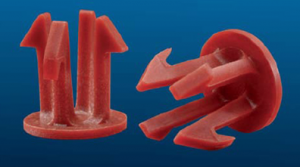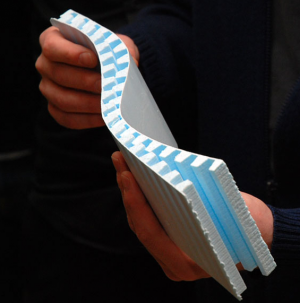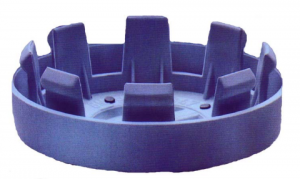Museum Fictions
Debbie's Incomplete Notes for the Library:
In 1971, the brothers Arkady and Boris Strugatsky wrote a short science fiction novel known as “Roadside Picnic’. It was later used as the basis for the screenplay of Tarkovsky’s Stalker, although the movie bears little resemblance to the quirkiness of the novel itself, as the first cut of the film had allegedly been shot on poor stock, and financial pressures caused the film to be edited to become a cheaper, simpler allegorical version of the original Roadside Picnic.
Most alien visitation stories imagine that humans are worth the alien’s time in making contact with, or even worth expending resources on to blow us up. We assume that it we can understand aliens on our terms. But what if, similar to Stanislaw Lem’s Solaris, the aliens visiting us are so far removed that no meaningful communication is possible? What if they just came and went without so much as noticing us? Like humans stopping by the road to have a picnic, leaving their random, meaningless detritus along the way for the animals to find but never understand?
A picnic. Picture a forest, a country road, a meadow. Cars drive off the country road into the meadow, a group of young people get out carrying bottles, baskets of food, transistor radios, and cameras. They light fires, pitch tents, turn on the music. In the morning they leave. The animals, birds, and insects that watched in horror through the long night creep out from their hiding places. And what do they see? Old spark plugs and old filters strewn around… Rags, burnt-out bulbs, and a monkey wrench left behind... And of course, the usual mess—apple cores, candy wrappers, charred remains of the campfire, cans, bottles, somebody’s handkerchief, somebody’s penknife, torn newspapers, coins, faded flowers picked in another meadow…
A highly rational culture threw containers with artifacts of its civilization onto Earth.
In short, the objects in this group have absolutely no applications to human life today. Even though from a purely scientific point of view they are of fundamental importance. They are answers that have fallen from heaven to questions that we still can’t pose.
The items left behind were just pieces of garbage, discarded and forgotten by their original user, without any preconceived notions of wanting to advance or damage humanity. Users, inscrutable, whose motivations we cannot understand. The humans pick over the god-like alien’s refuse, some of which the humans use to revolutionise human technology, some of which have unexpectedly destructive effects on the humans. At the end, it leaves the humans rushing to make up theories to explain for the visitation.
TRADING AND ECONOMY: The novel revolves about an economy that has developed around the zone. Stalkers enter the zones to pick artifacts, whilst having to negotiate around the police who restrict passage into the zone and clamp down on the black market. Items move from the zone (this one being in Canada) to external markets such as Europe where highest prices are obtained.
- intriguing to come to it from the view of critical design.
- material culture - plastic, 3d printing, modular parts, plastic snap-fit joints, plastic threads, brackets; easily come apart, easily come together, lost parts of jigsaw which are obvious clues you want to backwards engineer.
- mech engineering + product design perspective to design, easy replication, automation, computer aided design.
- product and consumer as inadequate terms to describe our relation to these objects, carpark ventilator shafts, single use printing cartridges, selfie sticks. experiences with "products".
- tchotchkes - yahoo branding guide on what items are okay as tchotchkes? trinkets, baubles, kipple
- discarded objects.
- The previously unstudied ethnographic collection - how to make it relevant to routes of exchange, migration. trading ideas and goods. this a constellation of enigmatic objects and the personal connections they bring to mind.
LPS
- let's imagine scenario where the site of pulau saigon is revisited. an artist impression of the original objects (selected list) is created in order to replace the missing or fragmented items in the others list, which were the unclassifiable items. now that we have the objects again, we will consider (imperfectly) what they meant. (a graphical translation, the same way a textual translation does not afford us the detail of what it was). my joy will be in writing these stories.
- future of design - design ethnographers/ archaeologists, trained as industrial designers to know how objects are designed, how certain quirks of material and design form define it. (eg: bakelite/thermoplastic dates an object immediately).
- tony: "All designers at present look to the future, products are made for a few years ahead, we already anticipate how future is going to be like when designing products"
- my favourites: (bakelite) threaded neck, battery, pin, spoon (one european, one chinese), the pink fragments.
- pulau saigon's significance on the singapore river - as a route of exchange. trading ideas and goods. but essentially unknown to us today. even its name is unknown (no specific proof). why saigon? because it housed goods from saigon. materials... products... what products or goods exactly? no one knows. how would we know if these goods weren't even from saigon? maybe they were brought from saigon to singapore. it is entirely plausible its name was just a product of exchange as well.
- LPS - a project to design hand-held plastic objects which are representations of the objects in the list "the other artefacts of pulau saigon".
publication & presentation
- production of individual objects - for show in WIP show at RCA in feb 2015
- selecting a team of product/industrial designers to speak to - circumstances of the objects origin
- photoshoot - ask their opinion on what the object would have been.
Ideas
- shift from material culture to immaterial knowledge
- Trading ideas and goods / museum space as trading post of agencies // Museum and museological assemblages as running side by side along with commercial interests and international trade
- museum // exhibition as medium
- design/industrial objects out of context - art objects
- Goal: identity what are the aesthetic/design opportunities in museum fictions. are alien things geometric because we lack imagination? crafting, design, art.
References / quotes
- Martial Museum of Terrestrial Art - Lydia Yee, Barbican exhibition and book - "encyclopaedia of terrestrial Life"
- Roadside Picnic
- Stanislaw Lem, Imaginary Magnitude
- A Canticle for Lebowitz
- Eugenio Donato, 1979: The set of objects the Museum displays is sustained only by the fiction that they somehow constitute a coherent representational universe. The fiction is that a repeated metonymic displacement of fragment for totality, object to label, series of objects to series of labels, can still produce a representation which is somehow adequate to a nonlinguistic universe... Should the fiction disappear, there is nothing left of the museum but “bric-a-brac...” a heap of meaningless and valueless fragments of objects (which are incapable of substituting themselves either metonymically for the original objects or the metaphorically for their representation.
- The First Snap-Fit Handbook: Creating Attachments for Plastics Parts Hardcover – May, 2000 by Paul R. Bonenberger
- Visual reference - plastic injection moulding: http://dir.indiamart.com/impcat/plastic-molding-parts.html
- buckle design: http://www.acesupplies.co.uk/acatalog/onlinecatalogue.html
- SOPHIE INTERVIEW: From http://www.billboard.com/articles/columns/chart-beat/6221915/sophie-producer-interview
- What genre do you coin yourself? - Advertising
- When you are in the process of creating, do you see colors? If so, what colors did you see while making "LEMONADE" and "HARD"? (Seeing color as a result of sensory stimulation is a neurological phenomenon known as Synesthesia). - A lot more so I think about physics and materials. "LEMONADE" is made out of bubbling, fizzing, popping and "HARD" is made from metal and latex -- they are sort of sculptures in this way. I synthesize all sounds except for vocals using raw waveforms and different synthesis methods as opposed to using samples. This means considering the physical properties of materials and how those inform the acoustic properties. For instance -- why does a bubble have an ascending pitch when popped and why does metal clang when struck and what is this clanging sound in terms of pitch and timbre over time? How do I synthesize this? Perhaps after learning about these things it might be possible to create entirely new materials through synthesis.


